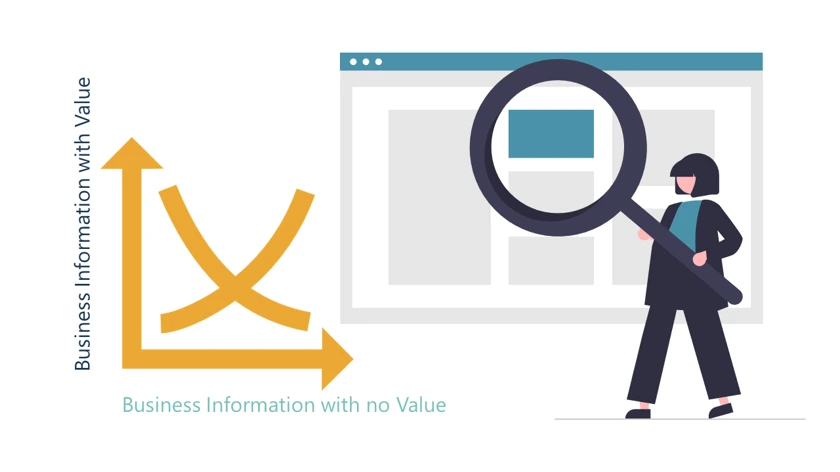Making sense of the value of Business Information

Now that I’ve identified the small percentage (and most important) of my company information as records, I need to look at the information that’s left.
It makes me think of the Pareto Principle & the 80/20 Rule. 20% Of my company information holds 80% of the value. Sadly, I still need to clean up and make decisions regarding the 80% that’s left, although it only contributes to 20% of the value. Painful I know, but perhaps if I do this, I can get rid of many boxes and repurpose old storage devices.
This process also helps me to have more empathy for the many cleanup and migration projects I’m involved in. When asking employees which important content to migrate, they’ll respond with “everything please”. When asking employees to cleanup and identify content first before migration you’ll seldom get the same answer. Importance & value definitely changes when linked to effort and the challenge is that the bulk of content created is not what we would consider valuable.
ephemera
pl. n. (ephemeron, sing.) Materials, usually printed documents, created for a specific, limited purpose, and generally designed to be discarded after use.
Business information with no value
The easiest way for me to determine whether information has value to me, is to ask myself the following: “If I lose that folder with documents or box with files, will it have a negative impact on me and my business?” If the answer is ‘No’, then it truly has no value.
Think of emails not related to your work and duties, newsletters, copies and drafts of documents and informal content created. For me the challenge is, that I do not go back, to cleanup and delete content and this information becomes the majority of the information I hoard.
Business information with value
If I answered ‘Yes’ to the above question, then the information has value to me. Although not considered as records and having limited lifespans, this content adds value, especially for reference and even reusability. Examples for me would be training manuals and videos I create, project related emails, formal communications, budgets, and sales projections.














